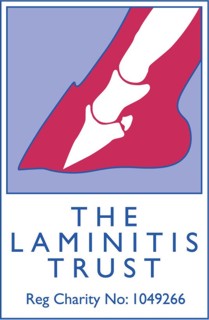
 |
FITTING
FROG SUPPORTS
|
|
The Laminitis Trust recommends the use of frog supports for animals with laminitis, acute founder and sinking syndrome. We do not support the use of any device which makes the horse take weight through it's soles. Nor do we recommend the use of shoeing systems which either raise or lower the heels of the foot. Rather, we prefer to confine the animal to a stable, deeply bedded with clean, dry, whitewood shavings; the horse can then set his feet at whatever heel height he feels most comfortable. It seems reasonable to assume that the horse understands exactly how to place his feet to achieve comfort rather better than his attendants do ! A correctly fitted frog support will improve the comfort of over 80% of laminitis and acute founder cases. They gain immediate relief and change their stance. Laminitis cases tend to adopt a heel loading and toe relieving stance with the limbs thrust out forwards. After fitting frog supports, the horse brings his feet back under himself and stands with his affected limbs in a more normal position. The principle of fitting frog supports is to increase the thickness of the horse's frog so that when he stands on the foot the frog presses on the ground. Some horses, particularly heavy draft breeds often have large frogs which do not require artificial thickening. The idea is to allow the horse to take some of his weight through the frog, and thus relieve some of the weight taken through the wall. The wall weight is taken through the laminae which in laminitis and foundered horses are both painful and unstable. Frog supports therefore reduce the strain on the laminae and reduce the likelihood of the horse foundering. Before decding whether to fit a frog support lift the foot and press on the frog hard with your thumbs. If the horse resents this do not fit a frog support but leave the horse in a deep shavings bed. Horses develop sore frogs because either they have had too thick a frog support fitted recently or if they are a founder case there is fluid accumulation beneath the frog and sole. You will need an elastoplast type of bandage to wrap around the foot in order to keep the frog support in place. (A cotton or Vetrap bandage will do but will wear through quickly). Fitting frog supports is easier with two people if the horse is reluctant to lift a foot. One person holds up the foot and steadies the frog support in place while the other person wraps the foot in the elastoplast bandage. Firstly, pick out the foot and brush it clean of mud and other debris. Ideally trim the frog as in the picture so that the collateral frog sulci can be seen to their depths and the true point of frog is revealed. If the horse is so sore that this is difficult, then the frog support can be fitted to an untrimmed frog provided the foot has been picked out. Place the frog support along the frog and look across the ground surface of the foot. The frog support should be a little higher than the walls of the foot at the quarters. Position the frog support about 1 cm behind the true point of frog, the other end finishes at the base of frog. One person then holds up the foot and with one finger keeps the frog support in the correct place along the frog while the other person wraps the foot with the elastoplast bandage to keep the frog support in place. Be sure not to bandage tightly over the coronary band and the heels. Provided the animal is box rested frog supports such as these will stay in place for up to one week. |
|